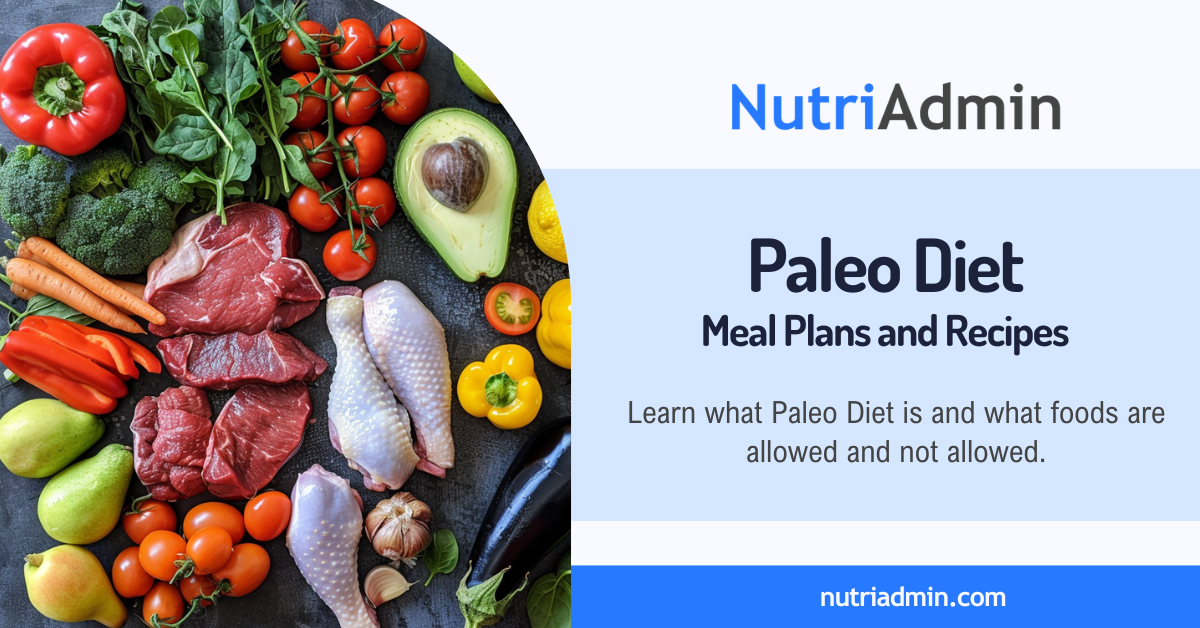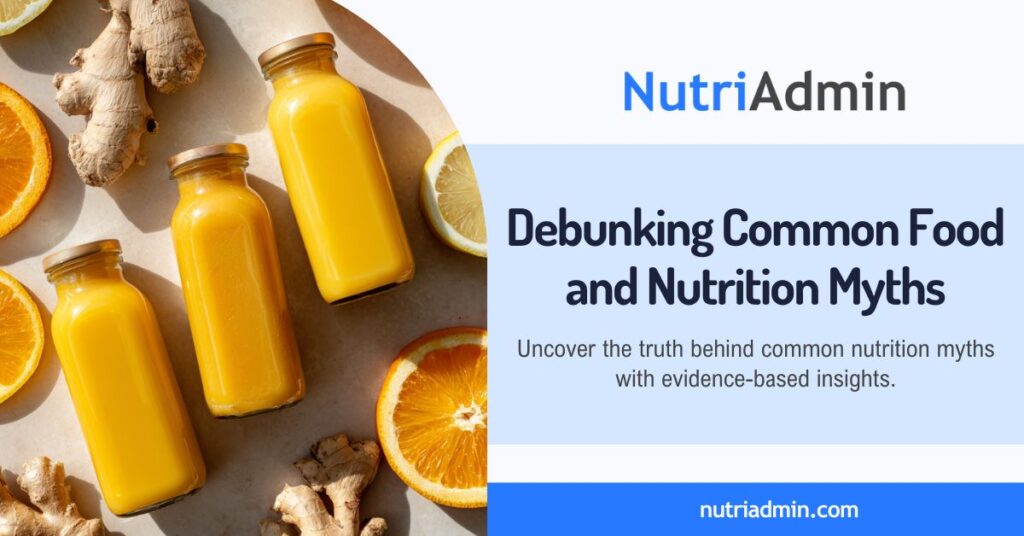Have you ever heard of the Paleo Diet and wondered why it’s named after an era that ended over 10,000 years ago? What does eating like a caveman have to do with modern-day nutrition? What exactly did they eat during that time? In this article, we will answer these questions and provide you with a free Paleo diet meal plan, recipe ideas, and a food list.
What is the Paleo Diet?
The term “Paleolithic” refers to the period of human history that occurred around 10,000 to 2.5 million years ago. The Paleo Diet, also known as the Caveman or Stone Age Diet, is based on the idea that our ancestors from the Paleolithic era consumed certain foods that were optimal for their health and longevity.
At this time, humans were hunter-gatherers who relied on foods that could be hunted, fished, or gathered from the surrounding environment. In other words, people during the Paleolithic era didn’t have access to processed foods that are prevalent in modern society.
Pros and Cons of the Paleo Diet
There has been a lot of debate and conflicting evidence on the potential health benefits of following the Paleo Diet. Some studies suggest this diet may help with weight loss, blood sugar control, and overall health.
However, others suggest it might not be the best idea because it excludes common foods like legumes, whole grains, and dairy. In this part, we will look at both sides of the argument so you can understand the Paleo Diet and how it might affect your health.
Potential Benefits
The Paleo Diet encourages the consumption of whole foods while cutting out processed foods from the diet. This part of the paleo diet is beneficial because most processed foods, especially the ultra-processed ones, contain high levels of sodium, sugar, and saturated fat, which is associated with a higher risk of adverse health outcomes.
A diet review by Harvard T.H. Chan’s The Nutrition Resource states that several studies have shown that the Paleo diet produces greater short-term benefits than diets based on national nutrition guidelines.
The benefits include:
- Weight loss
- Reduced waist circumference
- Decreased blood pressure
- Increased insulin sensitivity
- Improved cholesterol
However, the studies were short-duration (6 months or less) and had few participants. Further research involving longer-duration studies and a larger number of participants is necessary to verify its long-term benefits.
Potential Disadvantages
- The Paleo Diet excludes legumes and whole grains, despite their nutritional value, including fiber, vitamins, and minerals important for gut health. By eliminating these important sources of nutrition, individuals following the paleo diet may be at risk of developing nutrient deficiencies, which could have implications for their overall health and well-being.
- It also excludes dairy, a good source of essential nutrients like calcium, protein, vitamin B12, and vitamin B2. Although there are non-dairy foods rich in calcium, such as leafy green vegetables, a person would have to eat five or more servings to meet daily recommended needs.
- Since the Paleo Diet requires fresh produce, it may be more expensive than other diets and would require individuals to go to the grocery more often than normal.
- A 2023 study revealed that the Paleo Diet, along with the Standard American and keto diets, has a higher carbon footprint than the Mediterranean, vegan, and climatarian diets.
- High consumption of red meat, which is evident in the Paleo Diet, is associated with an increased risk of cardiovascular diseases.
What is in a Paleo Diet Meal Plan?
The paleo diet meal plans are centered around consuming whole, unprocessed foods such as a wide variety of vegetables, lean meats, nuts, and seeds. This approach emphasizes the exclusion of processed foods, legumes, grains, and dairy, focusing instead on foods that would have been available to our ancestors during the Paleolithic era.
It typically calls for:
- 30% of total calories from protein
- 40% of total calories from fats
- 30% of total calories from carbohydrates.
Followers of the Paleo diet believe that by following a diet mimicking the eating habits of the people from the Paleolithic era, we can improve our overall health and reduce the risk of chronic diseases.
Paleo Diet Meal Plan Food List
The Paleo diet typically includes fruits, vegetables, meat, fish, nuts, and eggs. However, it excludes grains, pulses, dairy products, sugar, salt, and processed food. Advocates of the diet also recommend selecting low-glycemic fruits and vegetables.
There is also a debate over whether certain items like alcohol and potatoes should be included or excluded.

Protein
The Paleo Diet meal plans emphasize the consumption of lean grass-fed meat, wild-caught fish, and seafood. They also permit the consumption of eggs. However, they restrict the intake of dairy and plant-based protein sources such as beans and lentils.
Carbohydrates
Paleo diet meal plans exclude common carbohydrates such as bread, oats, rice, and other whole grains. Instead, you can consume sweet potatoes, taro root, cassava, plantains, squash, fruits, and other vegetables.
Fats and Oils
In the Paleo Diet, there are numerous options for fats and oils. This includes:
- Tallow
- Lard
- Ghee
- All nut oils
- Avocado Oil
- Olive Oil,
- Coconut Oil
- Medium-High Oleic Sunflower Oil
- Cocoa butter
Paleo Diet Meal Plan
Now that we’ve discussed what should or should not be consumed in a Paleo diet meal plan, here’s a free 7-day sample meal plan PDF. You can use this example meal plan, created with NutriAdmin‘s meal plan generator, as a starting point for creating your own Paleo diet meal plan.
If you are a nutritionist, coach, or personal trainer specializing in the Paleo Diet, NuriAdmin’s meal plan generator can help you save time by easily planning Paleo meals. It is the best meal planning software to create customized Paleo Meal Plans for your clients, generating a personalized meal plan in just 60 seconds.
You can customize calories, macros, maximum ready time, cooking equipment, number of meals, and more! Additionally, each paleo meal plan and recipe includes an automatic nutritional analysis.
Paleo Diet Meal Plan Recipe Ideas for Lunch and Dinner
One of the daily dilemmas we frequently encounter is deciding what to eat for lunch or dinner. This seemingly simple question can often be quite challenging. It’s not just about satisfying hunger but also about choosing something delicious, healthy, and convenient. With so many options available, making this decision can sometimes feel overwhelming.
If you’re following a paleo diet, you’ll love these simple yet delicious paleo-friendly recipe ideas from NutriAdmin’s recipes database. These recipes are perfect for lunch and dinner and are designed to support your dietary preferences. You can also use this as a basis for creating paleo recipe ideas.
Final Thoughts
The paleo diet is a dietary plan based on foods that were available to humans during the Paleolithic era, before the advent of agriculture and modern food processing. It focuses on consuming lean proteins like meat, fish, and eggs, fruits, vegetables, nuts, and seeds while excluding grains, legumes, dairy products, sugar, and highly processed foods.
Some studies state that the Paleo Diet can aid weight loss, improve blood sugar control, and provide overall health benefits by eliminating processed foods high in sodium, sugar, and unhealthy fats.
However, critics argue that people practicing the Paleo Diet may be at risk of developing nutrient deficiencies. This is due to restricting nutrient-dense foods like legumes, whole grains, and dairy. The diet has also faced criticism for its potential environmental impact and association with increased red meat consumption.
While the paleo diet may benefit some individuals, no single diet is ideal for everyone. It’s best to try it for yourself while monitoring how you feel. Alternatively, consult with a qualified nutrition professional or healthcare provider, especially if you have any existing health conditions. They can help determine if the paleo diet is appropriate for your specific needs and make any necessary modifications.




